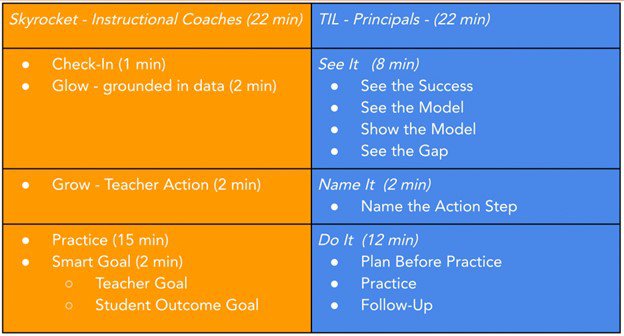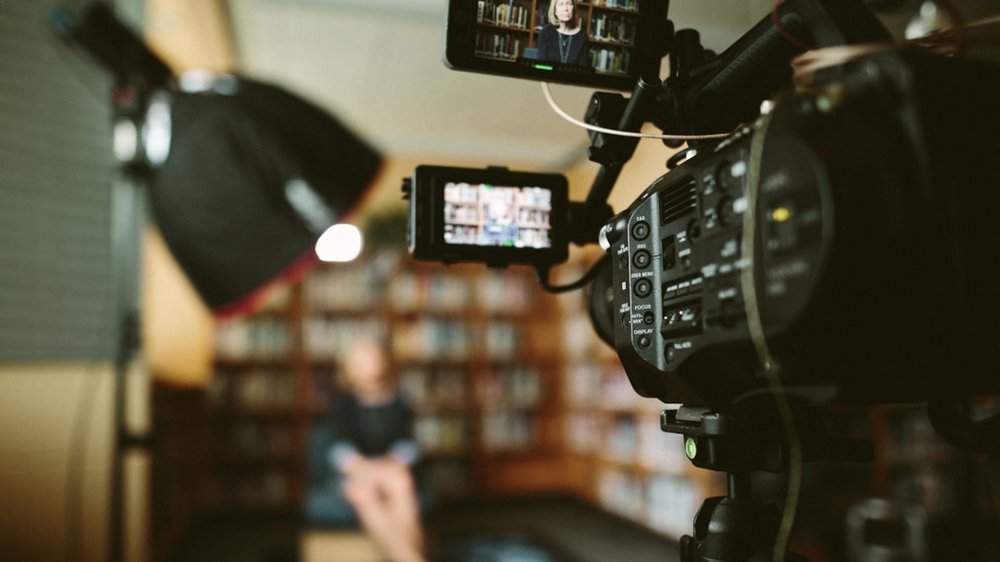Teachers make as many as 1,500 decisions every single day. Naturally, some of these decisions will have more positive outcomes than others. Having the outside opinion of a coach can help teachers identify and fix their weak points.
Video-based professional learning has revolutionized coaching, combining pragmatism with researched-backed efficacy. A study by the Institute of Educational Sciences (IES) found that five cycles of video-based coaching distinctly improved student performance, even among novice and underperforming teachers.
Video-based coaching is convenient because it allows school districts to hire coaches from outside their immediate area while minimizing disruptions of the day-to-day running of the classroom. When they know they’re being watched by someone in the classroom, teachers may subconsciously change their methods, so using video allows for more accurate documentation.
Districtwide professional learning is a powerful way to bring teachers and education leaders together to ensure school districts are aligned from top to bottom and, most importantly, that students are positioned for success. Building this sort of program can be a challenge, though.
Getting Buy-in and Setting Goals
I know building an instructional coaching program can be daunting because I've been there. I helped develop my Texas school district’s coaching program in 2018. We started by assembling stakeholders from around the district campuses to build a system that would work. This ensured that our program wasn’t planned centrally and then passed off to different campuses. Instead, it was developed as a coaching group for every campus, designed with input from stakeholders across the district.
Our first step was setting clear goals, which included agreeing on instructional priorities, defining coaching activities, setting clear instructional expectations, coordinating professional development, structuring educator collaboration, and planning ongoing reflection and evaluation. Adding video to our professional learning program has significantly enhanced it by granting teachers access to one-on-one coaching that allows them to recognize their strengths and weaknesses and take steps to improve.
Overcoming Challenges
Initially, we had some trouble getting the teachers on board. Many feared a punitive program where we recorded teachers to try to catch them off guard. We emphasized creating a culture of support, not harsh critique. Some teachers didn't feel comfortable recording themselves. Once we pinpointed the issue, we developed strategies to help alleviate the awkwardness many teachers experienced, such as letting them point the camera at their students for the first video.
We also emphasized the importance of providing specific examples of excellent teaching. We use Teaching Channel’s Video Library, which has more than 2,000 exemplary videos showing classroom management, transitions, and more that teachers can filter by grade, subject, or topic.
Structuring Our Sessions
In alignment with the Texas Education Agency's priorities, we follow the Texas Instructional Leadership model, which focuses on observation and feedback cycles.
We use video-based feedback on every level, meaning teachers are not the only ones being watched and coached. For example, I coach the principals on giving feedback to the teachers, and I receive feedback from my regional service center.
Most importantly, we want coaches to make the most of their time with teachers. If they only spend 22 minutes coaching an educator, we want to ensure it's the best 22 minutes possible. The feedback we give principals, then, focuses on essential pieces of delivering input so they can feel more confident having those productive conversations with teachers.
We’ve developed scripts that keep us on track and guide us through the process to ensure we always hit the core parts of coaching and balance the meetings. After all, it’s important to celebrate all the wonderful things happening in the classroom. Then, we look for any blind spots the teacher might have, create an action step, and practice the skill. (Practice takes up most of the meeting.) Here’s a sample agenda for a coaching session:

At the end of every coaching cycle, we gather feedback through surveys to follow our continuous improvement model. This feedback drives how we adjust or add to our coaching program. Our coaches can look at the survey data and identify where they could make adjustments to deliver feedback better and build trust.
Turning Feedback into Action
Turning verbal feedback into concrete change is a challenge. The video element comes into play here since the teacher has a specific example of a teaching habit they want to work on, and the coach can provide steps to put feedback into action in that particular instance.
For example, we had a teacher taking on too much of the cognitive load in class. The coach broke the problem into three components: “what,” “how,” and “as evidenced by.” The “what” was the goal: to get students to do conceptual thinking. The “how” was the method: asking students to verbalize their understanding. The evidence of that improvement was the students' conversations. The teacher and coach even practiced the application at the end of the session to further cement the teacher's growth.
Overall, introducing video into instructional coaching has been a game-changer. We have observed that giving feedback to school leaders and teachers builds their confidence, especially at the beginning of their careers. This increase in confidence has led to a notable decrease in teacher turnover, which was 40 percent in 2022, 34 percent in 2023, and is at 23 percent so far in 2024.
If you want to bring video-based professional learning to your district, don't let barriers stop you. As with any new system, anxieties and questions will doubtlessly arise. Fortunately, the research is on our side. Bring the stakeholders to the table so everybody's aware of the vision, moving in the same direction, and, more than anything, building a culture of support.
About the author
Dana Dudenhoeffer is the executive director of curriculum & instruction, Gainesville Independent School District (TX), where she uses Teaching Channel to power her instructional coaching program. During more than 25 years of experience, she has served as an instructional coach, dean of students, assistant principal, and district coordinator. She has also served as a Project Coach with Insight Education Group, where she implemented district-wide school improvement practices around the following three levers: Instructional Leadership Teams, Professional Learning Communities, and Instructional Coaching. She can be reached at danad@gainesvilleisd.org.











